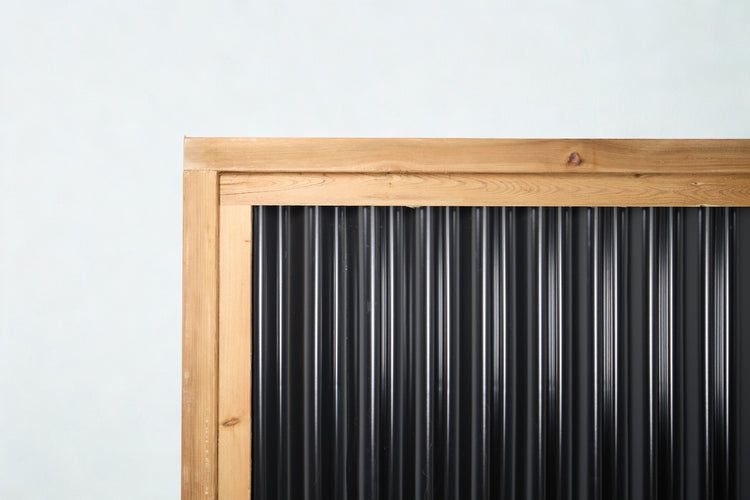Key Takeaway
-
Standard fence post spacing ranges from 6 to 10 feet, depending on fence type and material
-
Chain link fences typically require 10-foot spacing between posts
-
Wood privacy fences work best with 6-8 foot post spacing
-
Cattle fencing needs posts every 8-12 feet for adequate strength
-
Metal fence posts can span 8-10 feet with proper support
-
Always check local building codes and manufacturer specifications
Introduction
When planning a fence installation, one of the most critical decisions you'll make is determining how far apart should fence posts be. This fundamental aspect of fence construction directly impacts your fence's stability, longevity, and overall appearance. Whether you're installing a privacy fence for your backyard, a chain link fence for security, or agricultural fencing for livestock, proper post spacing ensures your investment stands strong against wind, weather, and daily wear.
The spacing between fence posts isn't a one-size-fits-all measurement. Various factors influence the optimal distance, including the type of fencing material, local climate conditions, soil composition, and the fence's intended purpose. Professional contractors and experienced DIY installers understand that getting this measurement right from the start prevents costly repairs and premature fence failure down the road.
Understanding Standard Fence Post Spacing Guidelines
The general rule for fence post spacing falls between 6 and 10 feet, but this range serves merely as a starting point. Most residential fences perform optimally with posts placed 8 feet apart, creating a balance between structural integrity and material efficiency. This spacing provides adequate support for fence panels while minimizing the number of posts required, keeping installation costs reasonable.
Environmental factors play a significant role in determining ideal post spacing. Areas experiencing high winds or frequent storms benefit from closer post spacing, typically 6 feet apart, to provide additional resistance against lateral forces. Conversely, regions with mild weather conditions and minimal wind exposure can often accommodate wider spacing up to 10 feet without compromising fence stability.
The fence height also influences how far should fence posts be apart. Taller fences create more surface area for wind resistance, requiring closer post spacing to maintain stability. A 4-foot fence might perform well with posts 10 feet apart, while an 8-foot privacy fence typically needs posts every 6 to 8 feet to prevent sagging and ensure long-term durability.
How Far Apart Should Chain Link Fence Posts Be
Chain link fencing represents one of the most forgiving fence types regarding post spacing, with standard installations placing terminal and line posts 10 feet apart. This wider spacing works because the chain link fabric distributes weight evenly across the entire fence line, reducing stress on individual posts. The interconnected wire mesh creates a unified structure that maintains tension between posts effectively.
Commercial and industrial chain link installations often follow stricter guidelines, particularly for security applications. High-security facilities might reduce spacing to 8 feet or less, especially when installing taller fences exceeding 6 feet in height. The additional posts provide enhanced rigidity and make the fence more resistant to climbing or breaching attempts.
Terminal posts, which include corner posts, end posts, and gate posts, require special consideration regardless of standard line post spacing. These posts bear additional stress from fence tension and directional changes, necessitating larger diameter posts and deeper concrete footings. When installing a chain link fence, always ensure terminal posts are properly braced and set before stretching the chain link fabric.

How Far Apart Should Wood Fence Posts Be
Wood fence construction demands careful attention to post spacing, with most installations performing best when posts are placed 6 to 8 feet apart. Privacy fences, which use solid panels or closely spaced pickets, create significant wind load and require this closer spacing to prevent warping, sagging, or complete fence failure during storms. The weight of the wood itself, especially when wet, adds considerable stress to the fence structure.
The type of wood used influences optimal spacing decisions. Pressure-treated pine, cedar, and redwood each have different strength characteristics and weather resistance properties. Pressure treated wood for fencing offers excellent durability and can sometimes accommodate slightly wider post spacing, but staying within the 6 to 8-foot range ensures optimal performance regardless of wood species.
Panel-style wood fences simplify spacing decisions since standard panels come in 6 or 8-foot widths. This standardization makes installation straightforward – simply space your posts to match your panel dimensions. However, when building custom wood fences with individual pickets, maintaining consistent spacing becomes crucial for both structural integrity and visual appeal. Consider using metal fence posts for wood fence construction for enhanced durability and easier installation.
How Far Apart Should Metal Fence Posts Be
Metal fencing systems offer superior strength compared to wood, allowing for wider post spacing in many applications. Corrugated metal fence panels typically accommodate 8 to 10-foot post spacing when properly installed with appropriate post sizes and concrete footings. The inherent rigidity of metal panels reduces the risk of sagging between posts, even with wider spacing.
Professional metal fence installations often utilize engineered specifications that account for local wind loads and soil conditions. Metal fence posts themselves provide excellent strength-to-weight ratios, but proper installation depth and concrete encasement remain critical for long-term stability. In areas with expansive clay soils or freeze-thaw cycles, closer post spacing might be necessary to counteract ground movement.
Modern metal fence systems like corrugated steel fence panels often include manufacturer recommendations for post spacing based on extensive testing. These guidelines consider factors such as panel gauge, corrugation pattern, and expected wind exposure. Following manufacturer specifications not only ensures optimal performance but also maintains warranty coverage for your fence system.

Specialty Fence Applications and Post Spacing
Agricultural fencing presents unique challenges when determining how far apart should fence posts be for cattle and other livestock. Cattle fencing typically uses posts spaced 8 to 12 feet apart, with high-tensile wire or specialized cattle panels providing containment between posts. The spacing depends on terrain, with hillier properties requiring closer spacing to maintain proper wire tension across elevation changes.
Deer fencing often utilizes wider post spacing, sometimes up to 15 or 20 feet, because the lightweight mesh material doesn't create significant structural load. However, the fence height – often 8 feet or taller for effective deer exclusion – may necessitate closer spacing in windy areas. Metal deer fence installations benefit from strategic post placement at natural stress points like gates and corners.
Decorative applications such as aluminum fence systems typically follow manufacturer guidelines closely, with most residential aluminum fences using 6 to 8-foot spacing. These lighter-weight systems rely on precise installation rather than brute strength, making proper spacing crucial for maintaining clean lines and professional appearance.
How Far Apart Should 4x4 Fence Posts Be
Standard 4x4 fence posts, measuring 3.5 inches square actual dimension, work well for most residential fence applications when spaced 6 to 8 feet apart. This post size provides adequate strength for fences up to 6 feet tall in normal conditions. However, how far should posts be apart in a fence using 4x4 posts ultimately depends on the fence material and local environmental factors.
For privacy fences exceeding 6 feet in height, consider upgrading to 6x6 posts for corner and gate locations while maintaining 4x4 posts for line posts. This combination provides additional strength where needed most while keeping material costs reasonable. The larger posts resist the twisting forces created by gates and the increased tension at direction changes.
When installing 4x4 posts in areas with sandy or loose soil, reducing spacing to 6 feet provides additional stability. The closer spacing compensates for reduced lateral support from the soil, preventing posts from leaning or shifting over time. Always set 4x4 posts at least one-third of the above-ground fence height into the ground, using concrete for permanent installations.
About BarrierBoss: Your Trusted Fence Partner
BarrierBoss® stands as a distinguished family-owned manufacturer specializing in metal fencing, roofing, cladding, and siding solutions across the United States. With over two decades of expertise in metal manufacturing, we've built our reputation on delivering exceptional quality products including corrugated metal roofing, metal siding, and comprehensive fencing systems. Our Washington state facility handles the entire manufacturing process in-house, ensuring impeccable quality control across our diverse product lines. From hog wire fence panels to vinyl fencing, we provide innovative solutions that combine functionality with aesthetic appeal, all backed by our commitment to exceptional customer service and competitive pricing.
Professional Installation Considerations
While understanding proper post spacing is essential, professional installation involves numerous additional factors that impact fence longevity and performance. Soil testing helps determine appropriate footing depth and concrete requirements, especially in areas with challenging soil conditions. Professional installers use specialized equipment to ensure posts are perfectly plumb and aligned, creating the foundation for a fence that will stand straight and true for decades.
Local building codes often specify minimum requirements for post spacing, depth, and fence construction methods. These regulations vary significantly between municipalities and may include restrictions based on fence height, location relative to property lines, and materials used. Checking with local building authorities before beginning installation prevents costly mistakes and ensures your fence meets all legal requirements.
The quality of concrete used for post footings significantly impacts fence stability regardless of spacing. Using the proper concrete mix, allowing adequate cure time, and ensuring proper drainage around posts prevents premature failure. In areas with freeze-thaw cycles, setting posts below the frost line prevents heaving that can destroy even properly spaced fence posts within a few winter seasons.
Conclusion
Determining how far apart should posts be for a fence requires balancing multiple factors including fence type, environmental conditions, and intended use. While general guidelines suggest 6 to 10-foot spacing for most applications, the specific requirements for your project may vary. Chain link fences typically accommodate 10-foot spacing, wood privacy fences perform best at 6 to 8 feet, and metal fence systems often allow 8 to 10-foot intervals between posts.
Successful fence installation goes beyond simply measuring distances between posts. Considering factors such as local weather patterns, soil conditions, and fence height ensures your investment provides years of reliable service. Whether you're protecting livestock with agricultural fencing or creating privacy with decorative panels, proper post spacing forms the foundation of a sturdy, long-lasting fence that enhances your property's value and functionality.
FAQs
Q: How far apart should fence posts be for a 6-foot privacy fence?
For a 6-foot privacy fence, space posts 6 to 8 feet apart. Closer spacing provides better wind resistance and prevents sagging, especially important for solid panel designs.
Q: How far should fence posts be apart for vinyl fencing?
Vinyl fence posts typically require 6 to 8-foot spacing, matching standard vinyl panel widths. Always follow manufacturer specifications since vinyl can expand and contract with temperature changes.
Q: Can I space fence posts 10 feet apart?
Yes, 10-foot spacing works for chain link fences and some metal panel systems. However, wood privacy fences and taller installations generally require closer spacing for adequate support.
Q: How far apart should fence posts be in sandy soil?
In sandy soil, reduce standard spacing by 1-2 feet for added stability. Use deeper footings with more concrete to compensate for reduced lateral soil support.
Q: How far apart should metal fence posts be for wire fencing?
Metal posts for wire fencing can typically span 8 to 12 feet, depending on wire type and tension. High-tensile wire allows wider spacing than standard field fence.
Q: Does fence height affect post spacing requirements?
Yes, taller fences require closer post spacing due to increased wind load. Reduce spacing by 1-2 feet for every 2 feet of additional height above 4 feet.


